It was a typically bleak bank holiday weekend on
Dartmoor with rain and wind whipping over the peaks. But it’s the weather that shapes the mood on this moor – and us visitors were not going to be put off by slate grey skies.
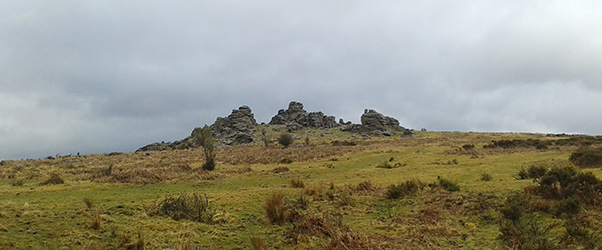
I was combining a short walk around
Hound Tor on the eastern side of the moor with a visit to one of the national park’s most mysterious sites,
Kitty Jay’s Grave. The immediate area around the burial mound, which I was soon to discover, is unique in terms of geology and folklore. The central focus is Hound Tor itself, a vast rocky peak that’s easy to access from the large car park (postcode TQ13 9XQ) just opposite, across the road.
The very name Hound Tor is enough to inspire campfire stories – you’ll find other similar place names if you’re exploring Dartmoor, varying from the benign to the sinister. According to which website you look at, legend has it a group of witches turned a roving dog to stone here, and if you’re searching for some canine likeness, you might see the outline of an exhausted great pooch sprawled across the hillside. Until 1995, the tor had an individual stack known as ‘The Hound’ – but a sudden rock fall brought down 500 tonnes of granite - giving fuel to the legend that the witches’ spell had been broken, releasing the hound to roam the moors once again.
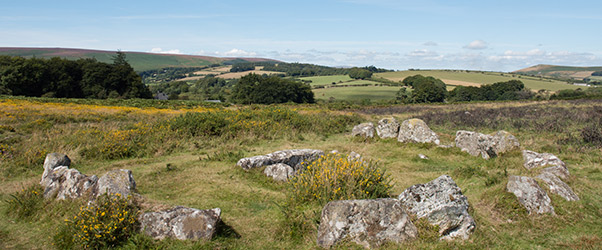
Hound Tor is not a particularly steep climb (its highest point is 414m; nearby Haytor is higher at 457m) and is ideal for those who perhaps want to walk off Sunday lunch. It’s popular with Conan Doyle/Sherlock Holmes fans – having allegedly inspired The Hound of the Baskervilles crime novel. For some though, it’s deemed too ‘evil’ a place to be near for long. There are countless sightings of ghosts in the area, human and canine – so camp nearby if you dare.
Phantom hounds have been heard on stormy nights ten miles south of the tor in the small town of Buckfastleigh. In the graveyard of Holy Trinity Church is the mausoleum of the Cabell family, including the notorious Squire Richard Cabell who was said to have sold his soul to the Devil. On his interment in 1677 a pack of phantom hounds is said to have charged across the moor to howl outside his tomb. Terrified villagers reinforced the grave, so that on the anniversary of Cabell’s death he could no longer rise to lead this pack of black dogs on their moorland charge.
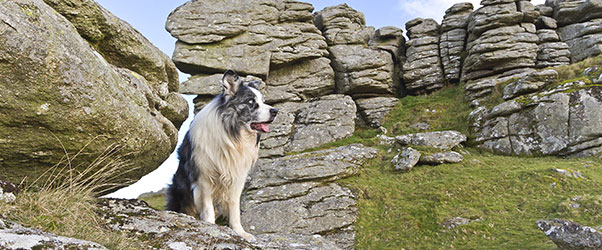
The site must have also caught the imaginations of the moor’s early residents, as burial remains sit around the peak in the form of a cairn and a stone circle enclosing a tomb. The remains of a
deserted medieval village are a quarter of a mile away too, something easily incorporated into a walk.
The grave of 18
th-century local girl Kitty Jay is of more than passing interest to many travellers who witness this solitary landmark on foot or from the road. It’s a short walk from the Hound Tor car park and is marked ‘Jay’s Grave’ on Ordnance Survey maps – grid ref SX732798. It’s thought to belong to a young housemaid who took her own life after discovering she was pregnant by a farm labourer. In those days, the nature of her death meant she was unable to be buried in consecrated ground, which many superstitious people believed would lead her spirit to wander. She was therefore buried on the outskirts of the parish, near a crossroad, (the grave is sited between a minor road and a public footpath to Natsworthy) so her spirit could find its way to the right place.
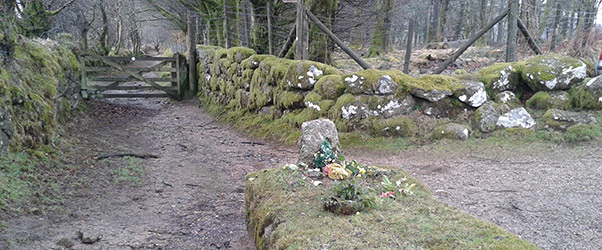
On my visit the grave was predictably strewn with fresh flowers. It’s said that even in snow, with no trace of footprints nearby, flowers appear on the raised tomb. Some say it is the ghost of Kitty herself who brings them, and there are numerous reports of a hooded ghostly figure kneeling by the grave in the moonlight…
There are countless other
spooky stories from the moor, which you can learn about at
Dartmoor National Park’s website and local
visitor centres at Haytor, Princetown and Postbridge.
Find out more about
circular Dartmoor walks online or at the visitor centres too.
Please take note of the
wild camping map of Dartmoor before you travel and be aware that not all parts of the moor are available to backpacking campers.
The Club's
Tavistock and
Teign Valley, Barley Meadow campsites sit within Dartmoor National Park and are the ideal base for seeking out even more of the park's mysteries.
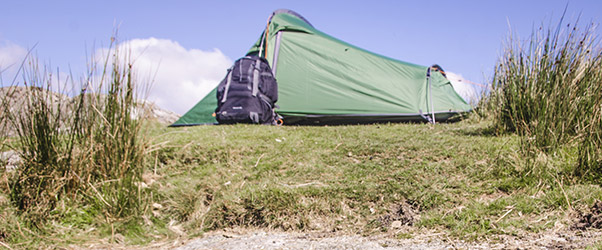
And if you’re thinking of bringing a pet, you can find out more about
dog-friendly Dartmoor online.